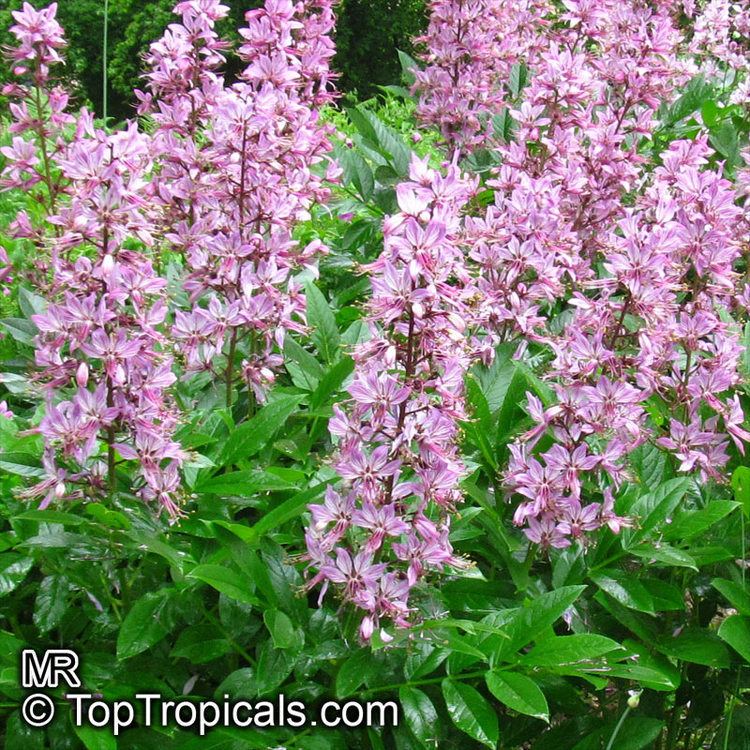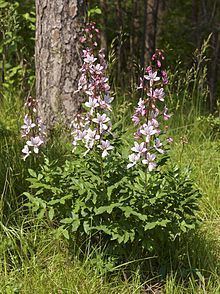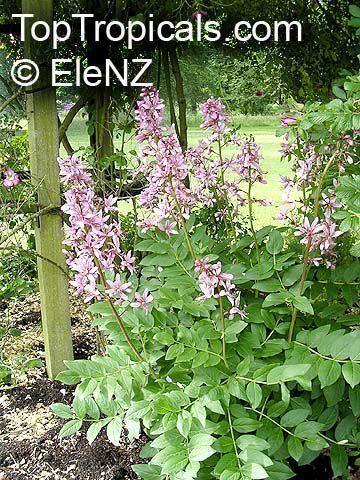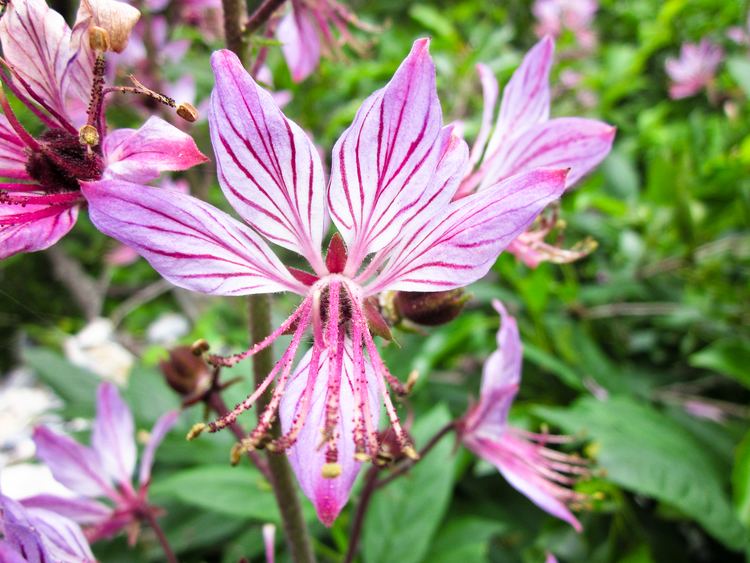Species D. albus | Subfamily Toddalioideae Scientific name Dictamnus Rank Genus | |
 | ||
Similar Rutaceae, Densefruit dittany, Dictamnus hispanicus, Dicentra, Aruncus | ||
Gas plant dictamnus albus
Dictamnus is a genus of flowering plant in the family Rutaceae, with a single species, Dictamnus albus, which has several geographical variants. It is also known as burning bush, dittany, gas plant, and fraxinella. It is a herbaceous perennial, native to warm, open woodland habitats in southern Europe, north Africa and much of Asia.
Contents
- Gas plant dictamnus albus
- Mooseksenpalavapensas gas plant or burning bush dictamnus albus
- Description
- Volatile oils
- Cultivation
- Toxicity
- Chemistry
- References

Mooseksenpalavapensas gas plant or burning bush dictamnus albus
Description

This plant grows about 40 cm (16 in) to 100 cm (39 in) high. Its flowers form a loose pyramidal spike and vary in colour from pale purple to white. The flowers are five-petalled with long projecting stamens. The leaves resemble those of an ash tree.
Volatile oils
In the summer months, the whole plant is covered with a kind of flammable substance, which is gluey to the touch, and has a very fragrant, lemony aroma; but if it takes fire, it goes off with a flash all over the plant. The name "burning bush" derives from the volatile oils produced by the plant, which can catch fire readily in hot weather, leading to comparisons with the burning bush of the Bible, including the suggestion that this is the plant involved there. The daughter of Swedish botanist Carl Linnaeus is said to have ignited the air once, at the end of a particularly hot, windless summer day, above Dictamnus plants, using a simple matchstick. The volatile oils have a reputed component of isoprene.
Cultivation

Numerous varieties and cultivars have been selected for garden use. The variety D. albus var. purpureus (purple flowered dittany) has gained the Royal Horticultural Society's Award of Garden Merit.
Toxicity

The leaves have a bitter and unpalatable taste. Despite the lemon-like smell, the plant is acrid when eaten. All parts of the plant may cause mild stomach upset if eaten, and contact with the foliage may cause photodermatitis.
Chemistry

More than 100 chemical constituents have been isolated from the genus Dictamnus, including alkaloids, limonoid triterpenoids, flavonoids, sesquiterpenoids, coumarins, and phenylpropane.

